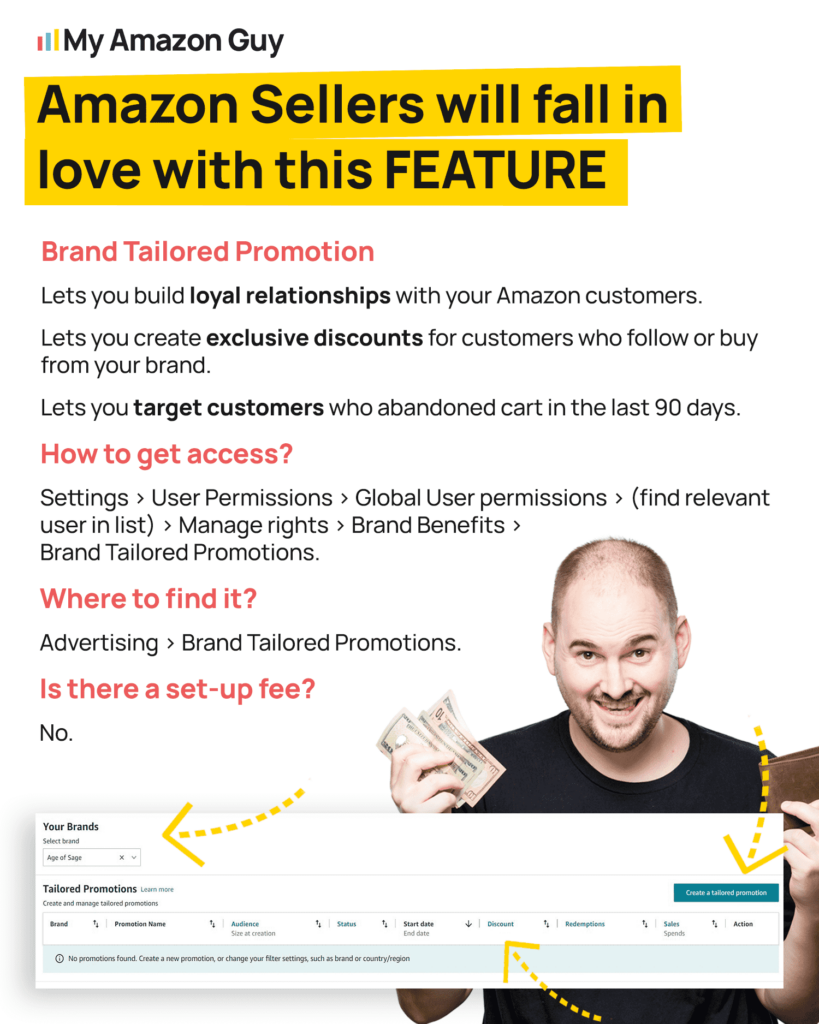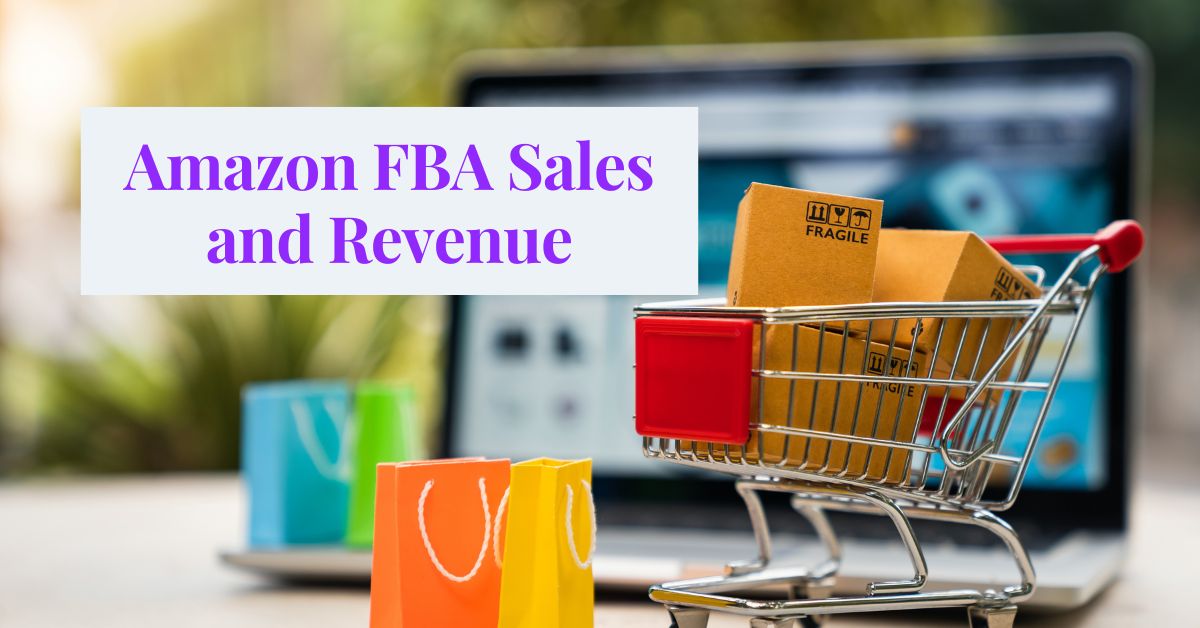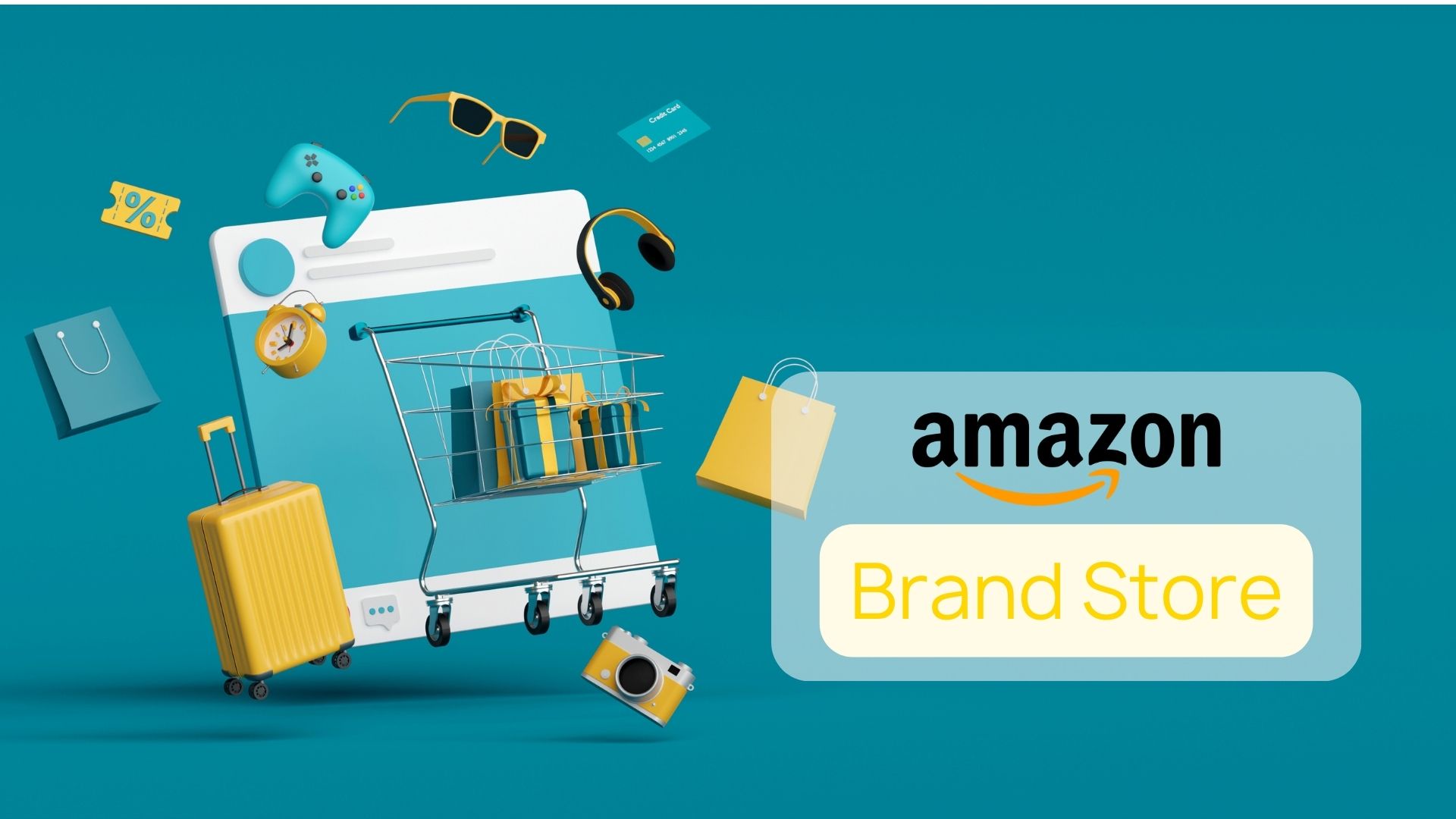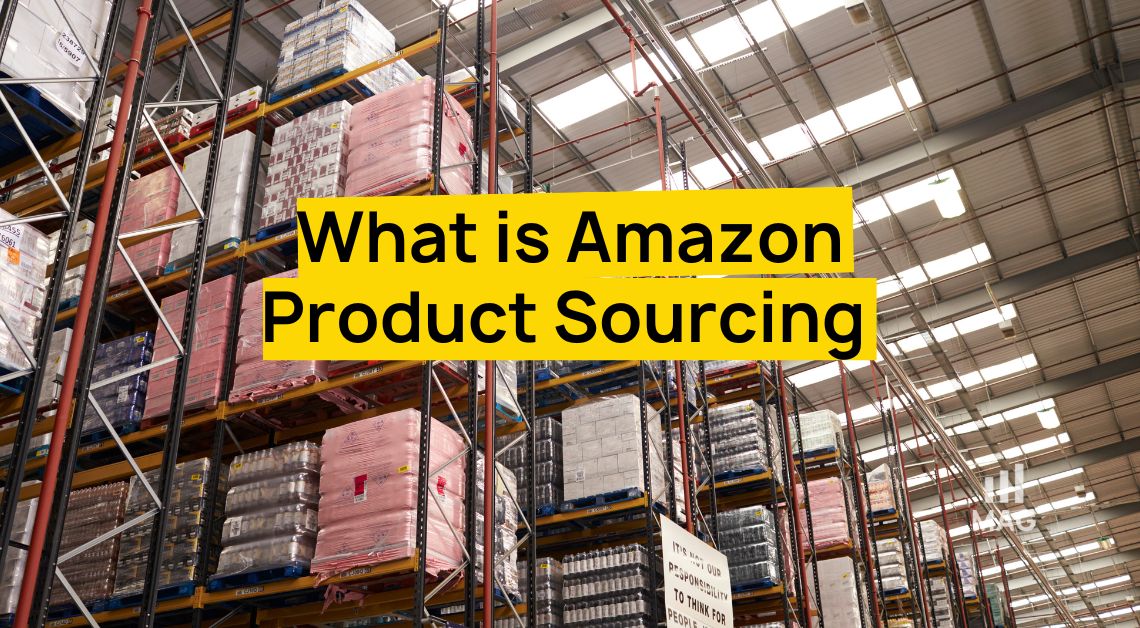Think selling on Amazon is a walk in the park? Think again.
Amazon selling is a jungle out there, and only the strongest survive.
The competition is fierce, and the rules are constantly changing.
Frustration, disappointment, and financial losses are just a few consequences of not being prepared.
Keep reading until the end of this article if you want to discover the powerful knowledge and strategies we employ at our Amazon Agency to overcome these selling challenges.
Challenges of Selling on Amazon: Finding a Profitable Niche
A niche that aligns with your interests may not be profitable, leading to financial uncertainty
The Challenges of Finding a Profitable Niche
- Many sellers are already targeting popular niches, making it difficult to stand out
- Consumer preferences can change rapidly, making it essential to adapt quickly
- Market fluctuations can impact sales and profitability
- Insufficient research can lead to poor product selection and high risks
Conducting Thorough Research
- Understand consumer demand and identify gaps in the market
- Research existing sellers and their products
- Identify emerging trends and seasonal fluctuations
- Understand what customers are looking for and what drives their purchasing decisions
Finding a Profitable Niche on Amazon
- Start with broad categories and narrow down to specific sub-niches
- Use Amazon’s Best Seller List and Amazon Trends to identify popular products and trends
- Utilize online tools such as Google Trends, Keyword Tool, and social media listening to gather insights
- Join online communities and forums related to your niche to gather information and feedback from potential customers
Challenges of Selling on Amazon: Product Sourcing
New e-commerce businesses often have limited budgets, making it difficult to source products due to warehousing costs. This can lead to reduced inventory options and increased shipping times.
Source Products To Sell on Amazon
To source products for Amazon, start by researching top sellers using tools like Helium 10 or DS Quick View to analyze features and issues. Identify potential products based on your findings and order samples from competitors to assess quality.
Analyze one-star reviews of these products to pinpoint common complaints, such as durability or odor. Use this feedback to ensure your product addresses these issues effectively.
Other Best Practices for Sourcing Products
- Source from Alibaba. Request samples from multiple suppliers to compare quality and address common issues, such as tearing and odor.
- Consider hiring a sourcing agent to streamline the process and avoid errors. The agent can assist with manufacturer selection, quality control, and shipping logistics.
- Select the best sample, place your order, and prepare for the product launch.
Read our What Is Amazon Product Sourcing: Your Ultimate Playbook for a complete guide to sourcing products to sell on Amazon.
Challenges of Selling on Amazon: Product Selection
While many AI tools may overwhelm with their quantity and varying quality, Perplexity stands out with its unique ability to cite sources, adding a layer of credibility and transparency.
By leveraging this tool, you can navigate through the noise and identify emerging product categories on Amazon with greater confidence.
Market Demand and Marketing Strategy
- Consider market demand and marketing strategy at the outset
- Identify products that meet customer demand and stay up to date with market trends
Prohibited and Restricted Items
- Check Amazon’s list of prohibited and restricted items (e.g. alcohol, tobacco products, lottery and gambling products)
- Some products may only be shipped locally, limiting their global reach
Customization and Personalization
- Some products require unique customization or personalization (e.g. Nurish by Nature Made’s customized multivitamins)
- Amazon’s capabilities for pre-sale customization are limited
Shipping Challenges
- Products that are difficult or expensive to ship (e.g. large, heavy, fragile, or require refrigeration) may be challenging to sell online
- Shipping via Amazon can be even more complicated
Fulfillment by Amazon (FBA) Program
- Utilize FBA to handle warehousing and shipping for a fee
- Only products from companies that use FBA will receive the Prime designation, which gives free shipping to Prime members
Why Some Products Don't Make the Cut
Prohibited and Restricted Items:
- Products like alcohol, tobacco, and lottery items are banned or need special permissions.
- Legal restrictions limit some items to local shipping, reducing their global appeal.
Limited Customization:
- Amazon’s platform supports basic customization but struggles with highly personalized products.
- Extensive personalization, such as custom multivitamins, isn’t feasible on Amazon.
Complex Logistics:
- Large, heavy, fragile, or perishable items are difficult and costly to ship.
- Special handling requirements increase shipping complexity and costs.
- Amazon’s Fulfillment by Amazon (FBA) program charges higher fees for nonstandard items, making them less profitable.
A Fledgling Entrepreneur's Lessons Learned
A new entrepreneur listed a dietary supplement manufactured in India on the European markets, but it was a costly and time-consuming experience. Despite her enthusiasm, she underestimated the challenges that came with listing a new product on Amazon.
Lessons to learn:
- Don’t assume you know what you’re getting into: Without thorough research, she was blindsided by the complexities of Amazon’s policies and requirements for dietary supplements.
- Understand the market and regulations: Research is crucial to ensure your product meets all necessary standards and regulations, saving time and money in the long run.
- Know your competition: Researching the competition can help you identify gaps in the market and potential areas for differentiation.
Listing a dietary supplement on Amazon was a valuable lesson in the importance of thorough product research. Had she done her due diligence upfront, she would have saved time, money, and frustration. Remember, research is key to setting yourself up for success in e-commerce.
Identifying Target Audience
Pinpointing your target audience is crucial for effective Amazon selling. While the platform offers a vast potential customer base, this can also make it challenging to identify and reach the right people.
How to Overcome the Challenge
Understand Your Customer
- Use Amazon analytics to identify demographics, behaviors, and pain points
- Conduct market research to validate assumptions
Focus on the Right Message
- Create buyer personas for targeted marketing
- Use resonant imagery to appeal to your audience
- Test and refine images for conversions
Pivot When Necessary
- Analyze feedback and make data-driven decisions
- Be willing to rebrand or adjust strategy if it’s not working
Find out more about how to find your target audience, read our article on Understanding Your Target Audience: Creating A Customer Avatar To Drive Conversions
Ineffective Value Proposition
A value proposition is a concise statement that communicates the value of your product and how it responds to your target audience’s needs.
Common Issues with Value Propositions
- Too narrow focus: Targeting a specific niche that may be too small to generate significant sales
- Lack of clarity: Unclear or confusing messaging that fails to resonate with customers
- Insufficient differentiation: Failure to differentiate your product from competitors
Examples of Ineffective Value Propositions
- “Our product is a cooling moisturizer” (too narrow focus)
- “Our product is the best moisturizer on the market” (lacks clarity and differentiation)
Best Practices for Crafting a Strong Value Proposition
- Identify your target audience’s pain points – Understand their needs, desires, and motivations
- Find the broader solution – Instead of targeting a specific niche, find a broader solution that appeals to a larger audience
- Make it clear and concise – Use simple language to communicate the value of your product
- Differentiate yourself from competitors – Highlight what sets your product apart from others in the market
Example: Cooling Moisturizer
- Original: “I like to first validate what the hooks and the ideas are that’ll lead to the sale of the product.” (narrow focus)
- Revised: “Stop itchy feet for good with our cooling moisturizer” (broader solution, clear and concise)
Driving More Traffic To The Product Listing
Increasing visibility and attracting potential customers to your Amazon product listing is crucial for sales success. Optimizing keyword usage, leveraging product accessories, and creating compelling product imagery are key strategies to achieve this.
Keyword Optimization for Maximum Visibility
- Identify High-Performing Keywords.
- Utilize tools like Helium 10 to discover relevant keywords with high search volume and low competition.
- Optimize Product Title and Description.
- Incorporate target keywords strategically into your product title, bullet points, and description.
Leverage Product Accessories to Boost Sales
- Create product bundles that include essential accessories to increase average order value.
- Clearly communicate the value and benefits of accessories in product descriptions.
- Include accessories as options within product listings to encourage add-on purchases.
Create Compelling Product Imagery
- Use professional-grade images that showcase the product from multiple angles.
- Emphasize key product features and benefits through image composition.
- Incorporate relevant keywords into image text for better search visibility.
- Use images that depict the product in use to create a desirable lifestyle association.
Packaging Challenges
Adhering to Amazon’s strict packaging guidelines is a significant hurdle for sellers. Improper packaging can lead to shipment delays, returns, and increased costs.
Packaging Requirements and Challenges
- Amazon imposes specific box sizes, labeling standards, and product packaging configurations.
- Non-compliance can result in additional shipping and return costs.
- Packaging errors can cause shipment delays, impacting product availability.
- Correctly applying multiple labels (manufacturer, Amazon, brand owner) can be time-consuming.
- Sourcing compliant packaging materials can add to operational expenses.
- The availability and cost of Amazon’s packaging service may not be feasible for all sellers.
Cart Abandonments
Cart abandonment remains a significant hurdle for online retailers despite overcoming other obstacles. Many customers add items to their carts but fail to complete the purchase.
Use Brand Tailored Promotions
Access Cart Abandonment Data
- Navigate to the “Brand Tailor Promotions” section in the advertising column to view data on cart abandoners.
- Review the number of users who added products to their cart but did not complete the purchase (e.g., 55,493 users in the example).
Leverage Remarketing Tactics
- Use remarketing strategies similar to those employed on other platforms, such as sending targeted email or SMS campaigns.
- Craft compelling offers or discounts to re-engage users and encourage them to complete their purchase.
Analyze and Adapt
- Continuously analyze cart abandonment data to identify patterns and issues.
- Adjust your promotional strategies based on insights gained to optimize recovery efforts.

Steep Competition
Amazon’s marketplace is highly competitive, characterized by a large number of sellers offering similar products and low barriers to entry. This intense competition makes it challenging for sellers to win the Amazon buy box, gain visibility, and drive sales.
Key Challenges
- A vast number of sellers compete for the same products, making it difficult to stand out.
- Intense competition often leads to price wars, impacting profit margins.
- Sellers face competition from international markets, especially China, where manufacturing costs are lower.
Strategies to Overcome Competition
- Develop unique selling points to distinguish your product from competitors.
- Build a strong brand identity to foster customer loyalty.
- Prioritize exceptional customer service to gain a competitive advantage.
- Expand beyond Amazon to reach a wider audience.
- Monitor market trends and adjust your strategy accordingly.
Prescribed Inventory Levels
Maintaining optimal inventory levels on Amazon is crucial for seller success. Balancing stockouts and excess inventory while adhering to Amazon’s stringent requirements presents significant challenges.
- Stockouts: Insufficient inventory leads to lost sales and decreased customer satisfaction.
- Excess Inventory: Overstocking results in increased storage costs, potential liquidation losses, and reduced profitability.
Amazon’s Inventory Performance Index (IPI)
- IPI measures a seller’s inventory management efficiency based on excess inventory, sell-through rate, stranded inventory, and in-stock inventory.
- Sellers with low IPI scores face reduced search visibility, loss of the Buy Box, and storage restrictions.
- Amazon’s imposed inventory limits restrict seller control over stock levels.
High Fees
Amazon sellers face a complex fee structure that can significantly impact profitability. The combination of various fees, including referral fees, fulfillment costs, and advertising expenses, can erode margins.
Breakdown of Amazon Fees
- Seller Account Fee – A recurring monthly fee for professional sellers.
- Referral Fees – A percentage-based commission on each sale.
- Fulfillment Fees – Charges for picking, packing, and shipping orders for FBA sellers.
- Storage Fees – Fees for storing inventory in Amazon fulfillment centers.
- Advertising Costs – Expenses for sponsored ads to increase product visibility.
Intellectual Property Infringements
Counterfeit products and intellectual property infringement pose significant threats to Amazon sellers. These issues not only impact sales but also damage brand reputation and customer trust.
The Impact of Counterfeits
- Lost Sales –Counterfeit products divert customers away from legitimate sellers.
- Brand Damage – Counterfeit goods can tarnish a brand’s reputation and dilute brand equity.
- Customer Dissatisfaction – Consumers who purchase counterfeit products may associate negative experiences with the legitimate brand.
Protecting Your Brand
- Proactive Monitoring – Regularly scan Amazon for unauthorized listings and product infringements.
- Leverage Amazon Tools – Utilize Amazon’s Brand Registry to protect intellectual property and report violations.
- Legal Protection – Secure trademarks and patents to strengthen brand protection.
- Customer Education – Inform customers about counterfeit products and how to identify authentic goods.
- Continuous Vigilance – Counterfeiters are persistent, requiring ongoing monitoring and protection efforts.
Customer Review Management
Customer reviews significantly impact product visibility and sales on Amazon. Effectively managing reviews, both positive and negative, is crucial for maintaining a strong seller reputation.
The Importance of Reviews
- Reviews influence buyer decisions, making them a critical factor in sales.
- Positive reviews contribute to higher search rankings, increasing product visibility.
- Reviews shape overall brand perception and customer loyalty.
Challenges in Review Management
- Negative feedback can damage product reputation and deter potential customers.
- Identifying and addressing fake or incentivized reviews is essential.
- Extracting actionable insights from reviews requires careful analysis.
- Encouraging reviews without violating Amazon’s guidelines is challenging.
Ineffective Marketing Message
Common Characteristics of Ineffective Marketing Messages
- Long, complicated sentences that overwhelm customers
- Messages that fail to stand out or differentiate your product from competitors
- Highlighting product features instead of explaining how they benefit the customer
What Makes Effective Messaging
- Easy to understand and concise
- Memorable and attention-grabbing
- Encourages customers to take action
The “Grandma Test”
- Can your grandma understand what your product does and why it’s valuable?
- If not, refine your messaging to make it clear and concise.
Example of an Ineffective Marketing Message
- “This is a revolutionary new product that will change the way you think about skincare. It’s got advanced technology and is made with the finest ingredients.”
Example of an Effective Marketing Message
- “Say goodbye to dry skin with our fast-absorbing moisturizer. Order now and get it delivered in 3-5 business days!”
By avoiding common pitfalls and crafting clear, concise, and catchy marketing messages that answer the key questions, you can effectively communicate your product’s value and encourage online shoppers to convert into paying customers on Amazon.
Ineffective Marketing Message
Common Characteristics of Ineffective Marketing Messages
- Long, complicated sentences that overwhelm customers
- Messages that fail to stand out or differentiate your product from competitors
- Highlighting product features instead of explaining how they benefit the customer
What Makes Effective Messaging
- Easy to understand and concise
- Memorable and attention-grabbing
- Encourages customers to take action
The “Grandma Test”
- Can your grandma understand what your product does and why it’s valuable?
- If not, refine your messaging to make it clear and concise.
Example of an Ineffective Marketing Message
- “This is a revolutionary new product that will change the way you think about skincare. It’s got advanced technology and is made with the finest ingredients.”
Example of an Effective Marketing Message
- “Say goodbye to dry skin with our fast-absorbing moisturizer. Order now and get it delivered in 3-5 business days!”
By avoiding common pitfalls and crafting clear, concise, and catchy marketing messages that answer the key questions, you can effectively communicate your product’s value and encourage online shoppers to convert into paying customers on Amazon.
Digital Marketing Budget Allocation
Effectively distributing a limited marketing budget across various tactics is a common hurdle for new Amazon sellers. The decision between paid and organic strategies often proves challenging.
Balancing Paid and Organic Marketing
- Determine the optimal distribution of funds between paid and organic channels.
- Choose which marketing tactics to focus on based on available resources.
- Track the ROI of different strategies to inform future budget allocation.
Prioritizing Organic Marketing
- Utilize organic channels to establish brand visibility and credibility.
- Take advantage of social media platforms like TikTok, Instagram Reels, and YouTube Shorts for organic reach.
- Once organic efforts gain traction, consider investing in paid advertising to amplify results.
Paid Ad Strategy Implementation
Paid Amazon ads are crucial for boosting product visibility, driving immediate sales, and expanding brand reach. They provide valuable data for optimization and help sellers compete effectively in the crowded marketplace.
Starting with Organic Content
- Use organic content to understand audience preferences.
- Analyze social media and web traffic data.
Running Effective Paid Ads
- Adapt successful organic content for social media ads.
- Validate paid ads with proven organic success.
Building a Paid Ad Strategy
- Leverage organic performance metrics to inform paid ads.
Scaling Ad Reach
- Amplify proven content with paid ads.
- Continuously optimize ad content based on performance.
Establishing Social Proof
Social proof, or the influence people have on others based on their actions, is a critical factor in driving sales on Amazon. Consumers are more likely to purchase a product when they see positive reviews, ratings, and recommendations from other buyers.
Overcoming the Social Proof Challenge:
- Encourage satisfied customers to leave reviews by offering incentives or simply asking politely.
- Collaborate with influencers in your niche to promote your product and generate authentic reviews.
- Share customer testimonials and user-generated content on your social media platforms to build brand awareness and trust.
- Provide exceptional support to foster positive customer experiences and encourage positive reviews.
- Promote your product to a specific audience to increase visibility and generate initial interest.
Boosting Conversion on Amazon
Converting website visitors into customers is a critical challenge for Amazon sellers. A smooth customer journey and compelling product messaging are essential to drive conversions.
Optimizing the Customer Experience
- Ensure easy website navigation for all users.
- Guide customers through the purchasing process.
- Create targeted landing pages to match specific ad campaigns.
- Maintain a clear and consistent brand narrative across all platforms.
By focusing on enhancing the customer experience and delivering relevant messaging, Amazon sellers can significantly improve conversion rates and boost overall sales.
Delivering Exceptional Customer Service
Providing top-notch customer service is crucial for building trust and loyalty on Amazon. However, managing diverse customer expectations across multiple channels can be challenging.
Overcoming Customer Service Challenges
- Implement tools to provide consistent customer service across all platforms.
- Equip your team with the skills to handle various customer inquiries effectively.
- Address customer concerns promptly to improve satisfaction.
- Anticipate customer needs and provide solutions before issues arise.
- Use customer insights to improve products and services.
Retaining Customers
Retaining customers is essential for long-term success on Amazon. By cultivating loyalty and building strong customer relationships, sellers can increase repeat purchases and reduce customer acquisition costs.
Key Strategies for Customer Retention
- Reward repeat customers with exclusive offers, discounts, or early access to new products.
- Stay connected with customers through personalized emails, promotions, and product updates.
- Actively seek and implement customer feedback to improve products and services.
- Provide prompt and helpful support to build customer trust and satisfaction.
Logistics Management
Efficient logistics is crucial for a successful Amazon business. Balancing supply chain complexities, managing shipping costs, and meeting customer expectations for fast delivery and easy returns can be daunting.
Overcoming Logistics Hurdles
- Utilize supply chain management software to streamline operations and reduce costs.
- Employ fulfillment apps to manage shipping, returns, and inventory effectively.
- Offer fast shipping options and hassle-free return policies to enhance customer satisfaction.
- Consider using Prep Services or 3PL providers to handle specific logistics tasks.
- Choose tools that seamlessly integrate with your existing e-commerce platform.
Omnichannel Customer Experience
Providing a seamless customer experience across multiple channels is a significant challenge for Amazon sellers looking to expand their reach.
Key Hurdles in Omnichannel Selling
- Accurately measuring the impact of marketing efforts across different channels is complex.
- Balancing profit margins between Amazon and other sales channels can be difficult.
- Maintaining a consistent brand identity and customer experience across platforms requires careful management.
- Determining the optimal allocation of resources between Amazon and other sales channels is challenging.
- Each platform has its own rules, regulations, and best practices, demanding adaptability.
Cyber Attacks
Amazon sellers should be deeply concerned about cyberattacks. The e-commerce landscape, especially on a platform as large as Amazon, is a prime hunting ground for cybercriminals.
Here’s why:
- Amazon sellers handle sensitive financial and customer information, making them highly attractive targets.
- A successful cyberattack can lead to significant financial losses due to stolen funds, legal fees, and reputational damage.
- Data breaches erode customer trust, impacting sales and brand loyalty.
- Cyberattacks can disrupt business operations, leading to lost sales and customer dissatisfaction.
- Non-compliance with data protection regulations can result in hefty fines and penalties.
To protect their businesses, Amazon sellers must implement robust cybersecurity measures, including:
- Strong password policies
- Regular software updates
- Employee cybersecurity training
- Data encryption
- Secure payment gateways
- Incident response planning
Search For the Most Suitable Technology
Selecting the appropriate technology is paramount for the success of any e-commerce business. The right platform will significantly impact a seller’s ability to overcome various challenges, from marketing to customer experience.
The Importance of Technology Selection
- The platform must offer essential features like shopping cart, payment options, and marketing tools.
- The technology should be able to accommodate business growth and increase order volume.
- Compatibility with other tools and systems is crucial for efficient operations.
- A robust platform is essential to protect customer data and prevent cyberattacks.
- The chosen technology should provide value for the investment.
Don't Let These Challenges Hold You Back
Selling on Amazon presents numerous challenges, from navigating complex algorithms to managing inventory and handling customer feedback. However, these obstacles are not insurmountable. By understanding the landscape and implementing effective strategies, sellers can turn these challenges into opportunities for growth.
Navigating these obstacles requires a strategic approach and expert guidance.
Let the Amazon experts at My Amazon Guy help you strategize and overcome these hurdles. Contact us today and pave the way to your success on Amazon.









